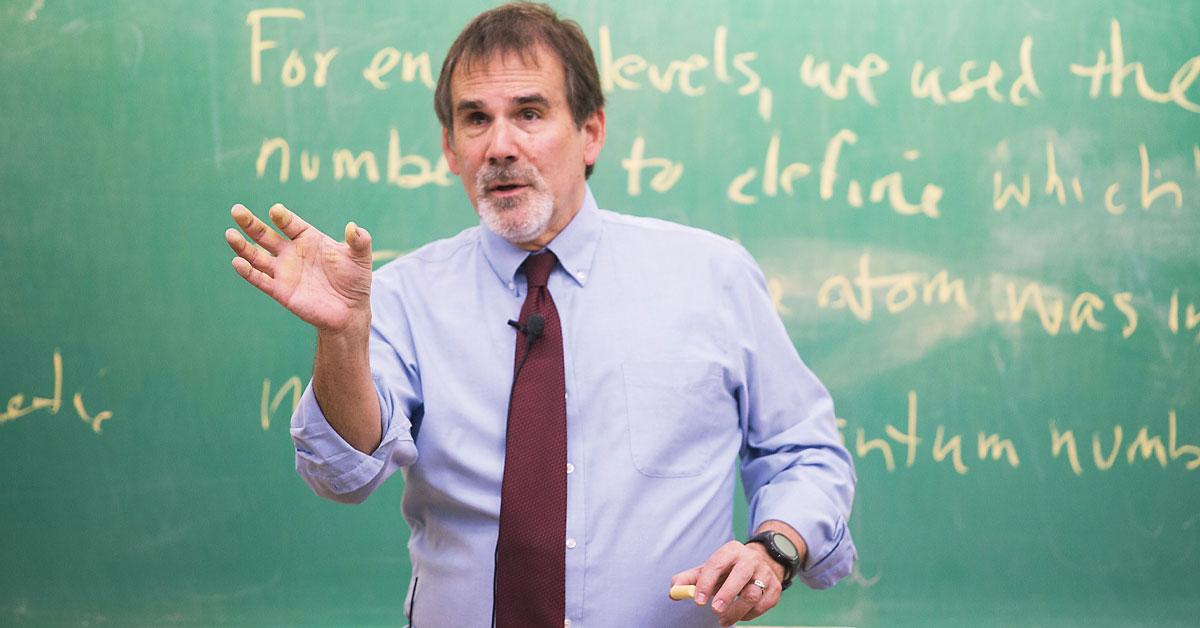Space's Storm Chasers: Inside Iowa's Latest NASA Mission
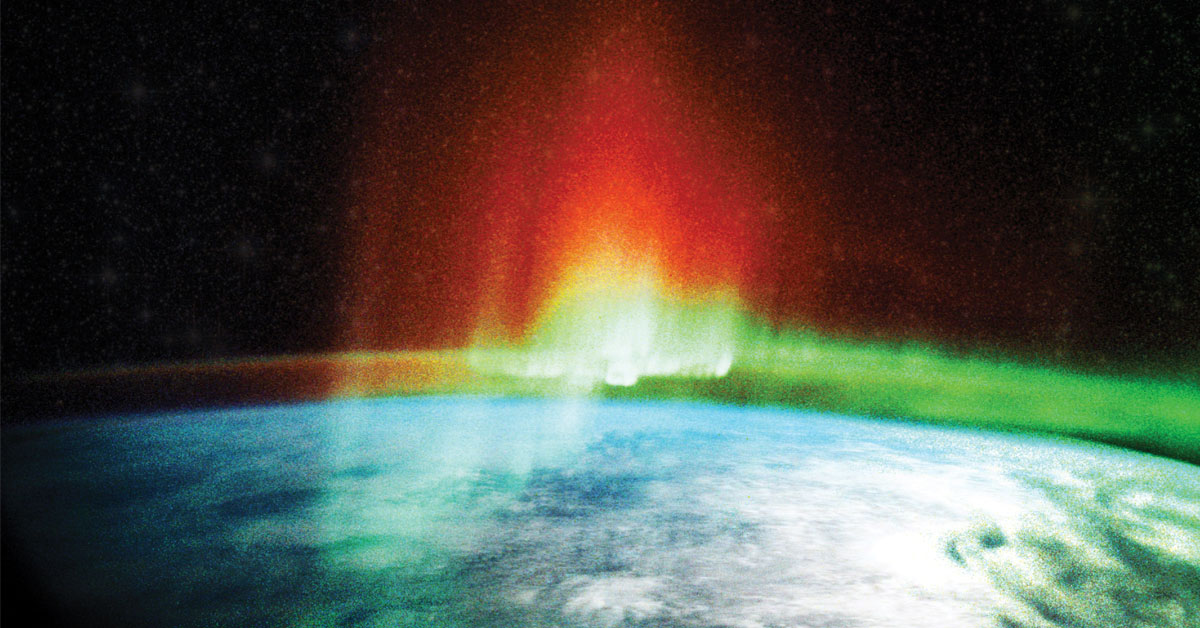 A crew member aboard the
Space Shuttle Discovery took
this photograph above aurora
australis, better known as the
southern lights.
A crew member aboard the
Space Shuttle Discovery took
this photograph above aurora
australis, better known as the
southern lights.
Dawn came early on Sept. 2, 1859. Across the U.S., inky darkness gave way to a strange glow. Gold miners in the Rocky Mountains, believing it to be morning, awoke and began to prepare breakfast. In Boston, it was so bright that bleary-eyed residents could read by window light. A perplexed Alabama newspaperman, wondering if his town was on fire, checked his pocket watch. It was 1:10 a.m.
As birds chirped, some Americans assumed it was an overcast sunrise. Others looked slack-jawed to the sky and asked if end times had arrived. From New York to Key West to Hawaii, the heavens bloomed in purples, blues, and greens. Pulsating ribbons of light turned night into day.
When morning came—actual morning—the strangeness continued. Along the East Coast, telegraph operators arrived at the office to find their equipment going haywire. Powerful electrical currents coursed through telegraph lines and overwhelmed relay magnets. Circuits sparked and caught fire. Wires melted. Even when operators disconnected the batteries, some lines could— to the signalmen's amazement—still transmit dispatches. In Washington, D.C., that week, a telegraph operator named Fred Royce had the misfortune of grazing a ground wire on a nearby wall when he leaned forward. A "spark of fire" jumped from Royce's forehead to a telegraph sounder, as an office worker described it. Royce was stunned but lived to tell the tale.
While electrical technology was in its infancy, the natural sciences were not. Newspapers around the nation explained that the dazzling nighttime lights were the aurora borealis, a phenomenon that occurs when the sun spews electrified gas and particles that bombard the Earth's atmosphere near the poles. While the northern and southern lights have been observed and studied since the early days of history, rarely, if ever, had they been seen this vividly at low latitudes.
"If something like [the Carrington Event] were to occur today, it would be devastating for all of humanity." —Jim Bridenstine
These atmospheric oddities of 1859, which transpired over multiple days and dazzled people not only in the U.S. but worldwide, are still studied by scientists and historians. Known as the Carrington Event, it was the largest recorded geomagnetic storm ever to hit our planet. In that pre-electric era, the impact on the "Victorian Internet," the telegraph system, was little more than a curiosity. But in a modern world of power grids, communication satellites, cell phones, GPS signals, and broadband networks—our high-tech civilization as we know it—it raises an unnerving question: What if another Carrington Event happened today?
An Unpredictable Threat
NASA's top brass discussed that possibility this past summer inside the University of Iowa's Van Allen Hall, a physics and astronomy building with a legacy that dates back to the Space Race. NASA administrator Jim Bridenstine and other government scientists met with students and toured laboratories following the announcement that NASA had awarded $115 million to a UI-helmed team to study space weather on a satellite mission dubbed TRACERS. It marked the single largest research grant in UI history and the latest milestone for a university that currently has 17 science instruments whirring through space.
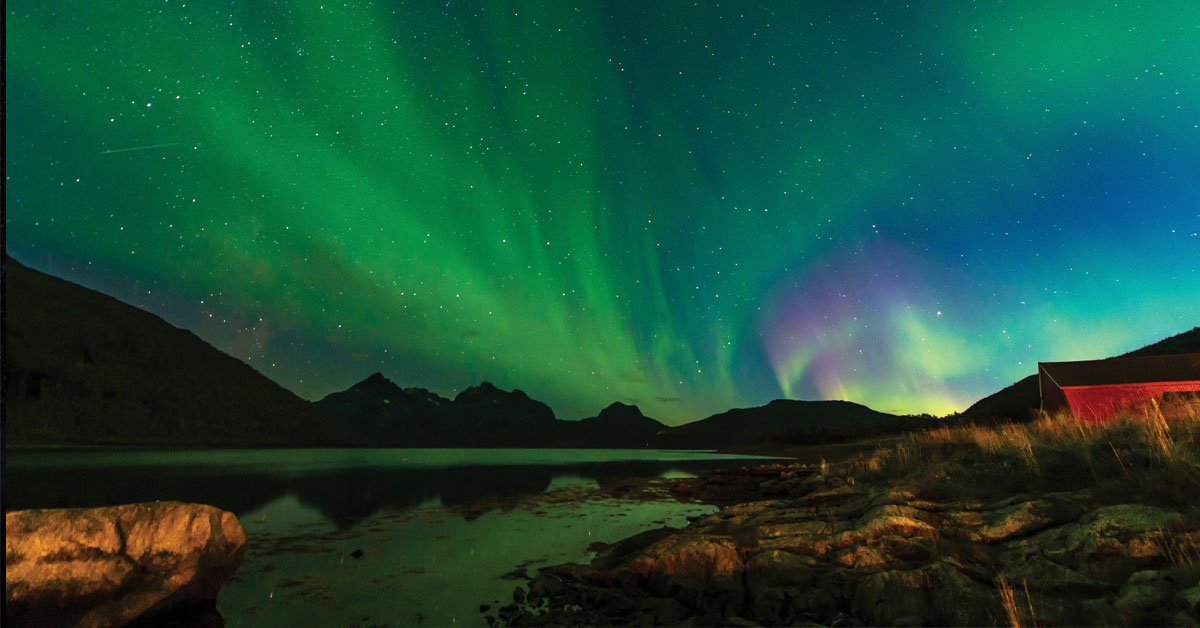 Coronal mass ejections, like what caused the Carrington Event in 1859, can cause spectacular auroral displays here on Earth.
Coronal mass ejections, like what caused the Carrington Event in 1859, can cause spectacular auroral displays here on Earth.
Between now and TRACERS' likely launch in 2023, the national team led by UI professor Craig Kletzing will build a pair of satellites to study how Earth responds to solar wind—the charged particles thrown from the sun that continually shower our solar system. The Earth's magnetic fields shield us from most of that harmful solar radiation, redirecting it around our planet and creating an atmospheric bubble that supports life. But Earth's magnetosphere is permeable. Sometimes the sun erupts and creates huge plumes of superheated plasma known as coronal mass ejections, or solar storms, which can travel a million miles per hour and overwhelm Earth's magnetic defenses.
While it's common for small solar flares to create space weather events that can affect technology—disrupting radio signals or forcing flights near the poles to reroute—larger storms pose a more serious threat. In 1989, the most famous modern-day geomagnetic storm left 6 million people without power for nine hours in northeastern Canada. It's been estimated that the 19th century Carrington Event was three times as powerful.
"If something like that were to occur today, it would be devastating for all of humanity," Bridenstine said during his UI visit. A disruption to the GPS satellite system alone could paralyze the power grids and banking networks that depend on GPS time stamps to operate, says the NASA chief.
"Think about a day without the power grid," says Bridenstine. "Before the power grid went down, it would fry all your electronics. Your cell phones wouldn't work, there would be no banking, and if there's no banking, there's no milk in the grocery store. ... There's no anything. What we're talking about the University of Iowa doing is helping us better understand these activities coming from the sun and how they work in conjunction with the Earth's magnetosphere, the magnetic field that protects us."
A 2013 study by British insurance market Lloyd's of London and the Atmospheric and Environmental Research company estimated that another Carrington Event could have as much as a $2.5 trillion economic impact—more than 10 times the cost of Hurricane Katrina—and it would take years for the world to recover. Meanwhile, there's no consensus on the probability of a solar tsunami on the scale of 1859 occurring again. A 2012 report pegged the chances of a similar event in the next decade at 12 percent, while a 2019 study showed at most a 1.88 percent chance. Scientists studying ice core samples found that the Carrington Event was the largest geomagnetic storm in 500 years.
Whatever the risk, NASA has made the study and prediction of space weather a priority, and experts warn that even much smaller storms could cause widespread problems. "Here's what's important," Bridenstine says. "We have to be really good at studying and understanding these events that come from the sun and how the Earth is going to respond to those events."
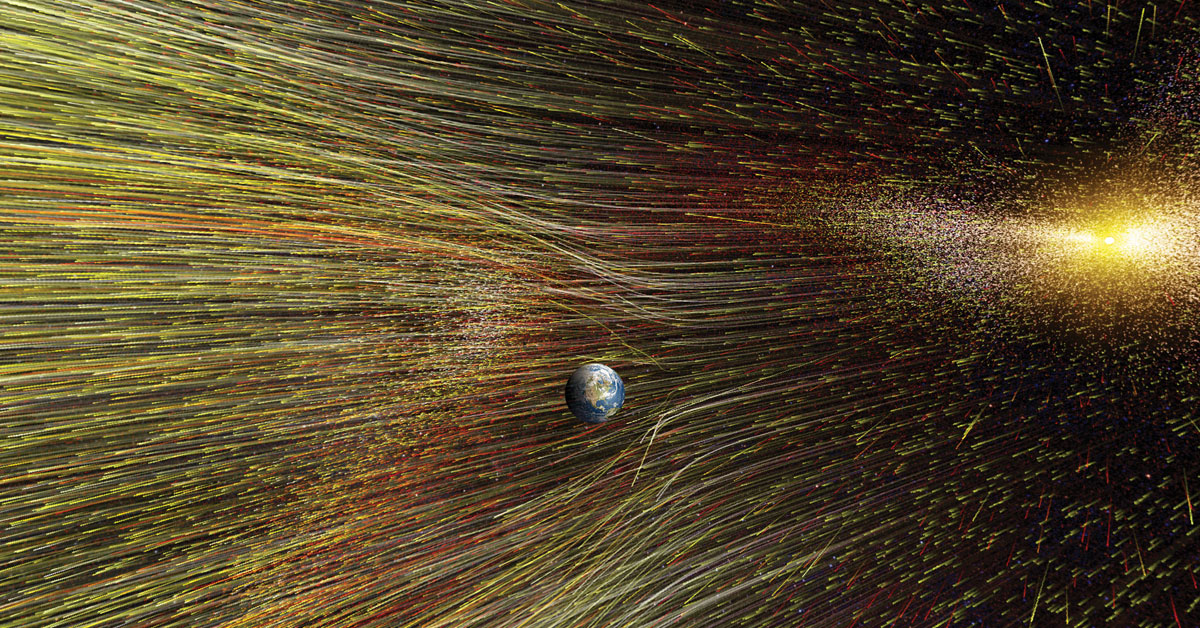 ILLUSTRATION: NASA
A constant flow of solar particles stream from the sun, as depicted here in an artist's rendering
from NASA.
ILLUSTRATION: NASA
A constant flow of solar particles stream from the sun, as depicted here in an artist's rendering
from NASA.
That's where the UI-led mission comes into play. TRACERS—short for Tandem Reconnection and Cusp Electrodynamics Reconnaissance Satellites—will answer crucial questions about how solar energy connects to Earth. That data will allow scientists to one day create better models to predict space weather.
Currently, says Kletzing, scientists build forecasts by observing activity on the sun like solar flares, measuring how fast the energy is moving toward Earth, and issuing warnings that terrestrial disruptions might occur. While there are resources like the Space Weather Prediction Center in Boulder, Colorado, Kletzing says our ability to anticipate solar storms and their impact is hazy, at best.
"It's kind of at the level of, 'There are some clouds, so it might rain,'" says Kletzing. "We'd like to get closer to what the National Weather Service can do—making accurate predictions of what is likely to transpire. We have some predictive capability, but it's not what I would call particularly accurate. The models are still primitive, and our monitoring spacecraft are sparse because they're expensive. It's more akin to having a weather station only in U.S. cities above 5 million."
A Legacy of Discovery
The day before the skies lit up in 1859, one of England's top solar astronomers was in his observatory sketching the sun's activity in his notebook. Richard Carrington peered at an unusually enormous cluster of sunspots projected by his telescope on a screen when, suddenly, two blinding points of white light emerged from the spots. Realizing he was seeing something extraordinary, Carrington raced from the observatory to fetch a colleague. When they returned a minute later, the lights had contracted to pinpricks, then disappeared. For the first time, an astronomer had witnessed firsthand a massive solar flare—the energy equivalent of 10 billion atomic bombs, as modern scientists describe it—setting off auroral displays around the world.
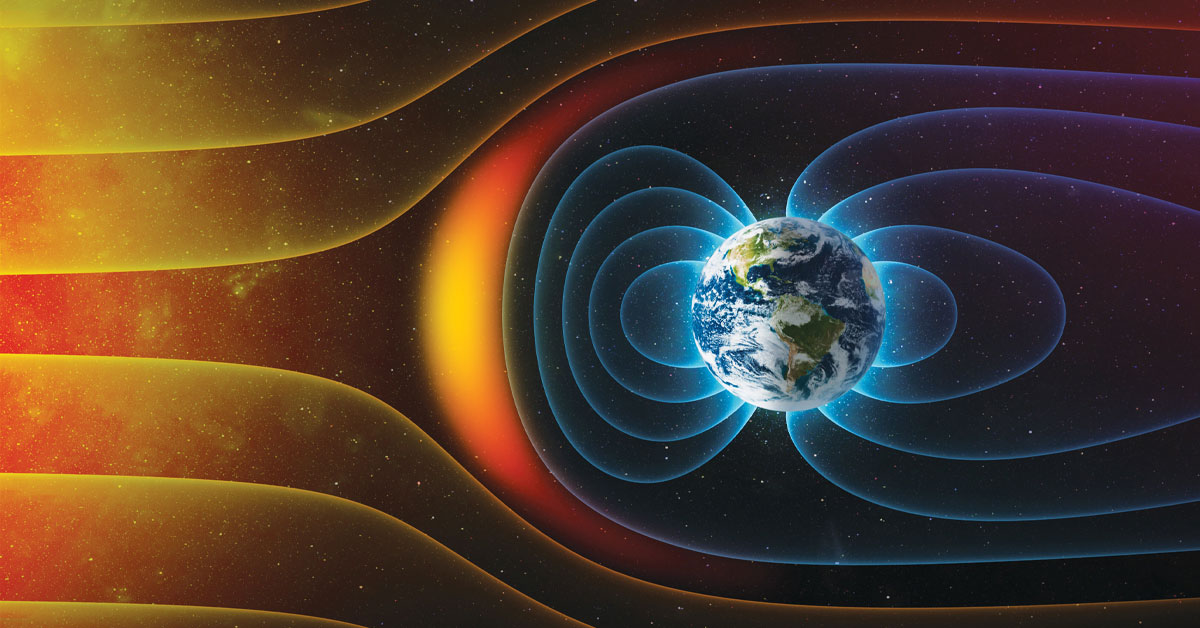 ILLUSTRATION: NASA
As illustrated in this artist's rendering, the Earth's magnetosphere shields our
planet from harmful solar winds.
ILLUSTRATION: NASA
As illustrated in this artist's rendering, the Earth's magnetosphere shields our
planet from harmful solar winds.
One-hundred-sixty years later, Kletzing and his team are similarly recording the mysterious effects of the sun—only with technology a bit more sophisticated than Carrington's telescope and projector. The twin TRACERS satellites will each contain five instruments, including two developed in-house at the UI. Associate professor Jasper Halekas (whom Kletzing awarded a bottle of red wine for coming up with the TRACERS acronym) is building an electron analyzer, while researcher George Hospodarsky (88BS, 92MS, 94PhD) is creating a magnetic search coil. Other instruments will be produced by partners at the Southwest Research Institute, the University of California-Berkeley, and the University of California-Los Angeles. The UI team is also collaborating with scientists at Auburn University, the University of Colorado, Dartmouth College, and Lockheed Martin.
In all, about 20 people from Van Allen Hall will work on the project in the coming years, including technicians in the machine and electronics shops who will build the instruments. While TRACERS is still in the early stages of planning and design, as the project ramps up, UI students will be able to gain hands-on experience. Bridenstine says by partnering with universities, they're creating "incubation centers" for the scientists of tomorrow.
TRACERS is part of NASA's longstanding Explorers program, which debuted in 1958 when Explorer 1 ushered in an era of American space exploration, carrying an instrument designed by UI physicist James Van Allen (36MS, 39PhD). The two TRACERS satellites will fly in a low orbit about 310 miles above Earth to study the "cusp" regions above the poles, where the solar wind can directly enter the magnetosphere. Flying between 10 seconds and two minutes apart, the satellites are expected to pass through the cusps 3,250 times over the course of the one-year mission to collect data on a phenomenon known as magnetic reconnection.
"When our astronauts go deep into space, whether it's to the moon or on to Mars, we have to be able to predict the events that will affect them; then we will have to be able to shelter and protect them. What happens here at the University of Iowa will enable us as an agency, NASA, to make those predictions." —Jim Bridenstine
Kletzing, the principal investigator overseeing TRACERS, is the latest in a long line of UI astrophysicists who have led NASA missions. That includes Van Allen, who famously discovered the radiation belts that surround Earth, and professor emeritus Don Gurnett (62BSEE, 63MS, 65PhD), who designed and built instruments for 35 space missions before his retirement last year. Carrying their torch is Kletzing, a California native who joined the UI faculty in 1996 after studying at the University of California-San Diego under the wing of Carl McIlwain (56MS, 60PhD), a former student of Van Allen. Last year, Kletzing was named the inaugural holder of the department's new Donald A. and Marie B. Gurnett Chair.
An expert in plasma physics, Kletzing has served as a co-investigator on several previous major NASA missions studying what he calls "geospace"—the regions of space near Earth—including the Van Allen Probes and the Magnetospheric Multiscale Mission. TRACERS, however, will be his most prominent role to date.
Yet saving the world from another Carrington Event is hardly how the professor frames his latest endeavor. "TRACERS is a basic science mission," says Kletzing. "We're doing it because we want to understand how things work. But there's a long history of doing basic research and coming up with things that no one expected, which turns into something important. I suspect the guys in the 1950s who were fiddling around with semiconductors that led to the transistor were not thinking they were going to modernize the electronics industry. That's why it's important we invest in basic science: because you just don't know where the next payoff is going to come from."
Back to the Moon—and Beyond
Over the decades, the UI has developed 70 research instruments for Earth-orbiting, planetary, and interstellar missions, and has built seven complete spacecraft. TRACERS, however, is part of a new wave of American space exploration. For the first time, Iowa-made satellites will be launched into space as part of NASA's rideshare program, which cuts costs by deploying separate satellite missions from the same rocket. Like an Uber to outerspace, TRACERS will split the fare with a companion NASA mission. The UI team is working with a private government contractor called Millennium Space Systems, a Boeing affiliate, which will deliver the payloads into orbit aboard a Falcon 9, Atlas V, or similar rocket.
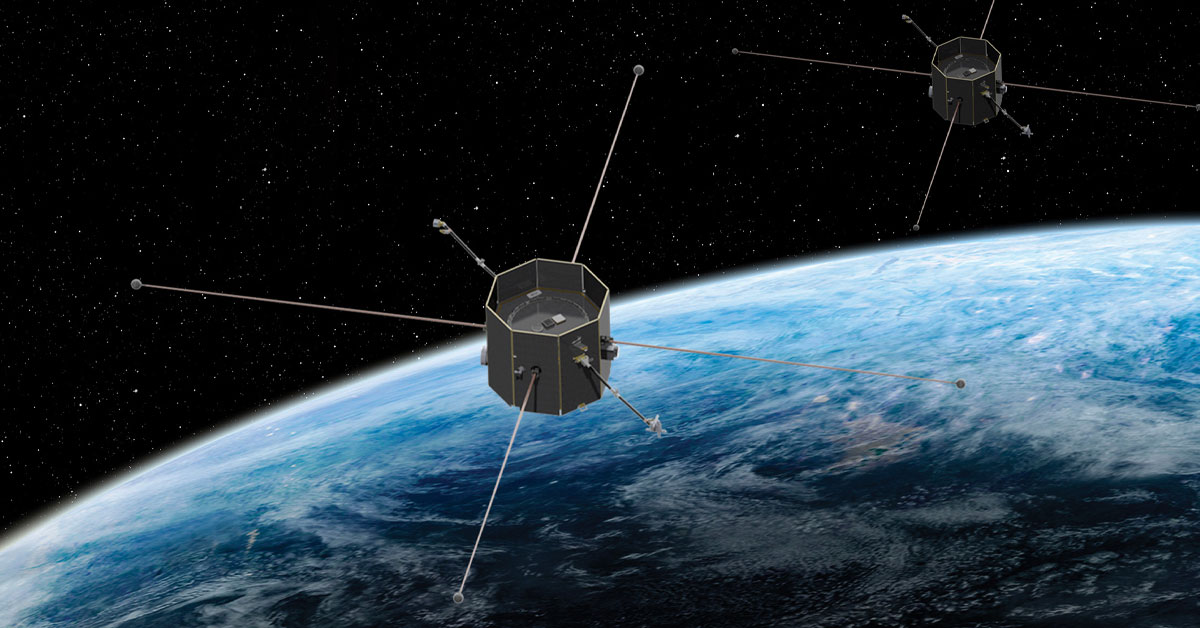 ILLUSTRATION: NASA
The twin TRACERS
satellites, which are
scheduled to launch
in 2023, are shown
orbiting Earth in
this NASA artist's
rendering.
ILLUSTRATION: NASA
The twin TRACERS
satellites, which are
scheduled to launch
in 2023, are shown
orbiting Earth in
this NASA artist's
rendering.
Just as Van Allen's discoveries helped pave the way for safe passage to the moon, the TRACERS mission represents a key step in the next generation of manned spaceflight. NASA's Artemis program, announced last year, aims to send the next man and first woman to the moon by 2024 and establish a sustainable presence there. The series of moon landings will allow NASA to test new technology necessary to achieve its long-term goal: sending humans to Mars.
As NASA charts that 140-million-mile course to the red planet—a two-to three-year round trip—the TRACERS mission and other space weather research will be crucial in protecting astronauts. While the Apollo missions of the Space Race era safely carried crews through the radiation of the Van Allen belts, a solar storm from a coronal mass ejection in August 1972 occurred just four months after Apollo 16's astronauts had left the moon and four months before the arrival of Apollo 17, NASA's last manned lunar mission. With no forecasting ability and no atmospheric shield, astronauts caught in the storm could have been exposed to dangerous doses of radiation.
"Back then, we didn't know what we didn't know," says Bridenstine. "But now we do because of Van Allen and so many researchers since Van Allen. When our astronauts go deep into space, whether it's to the moon or on to Mars, we have to be able to predict the events that will affect them; then we will have to be able to shelter and protect them. What happens here at the University of Iowa will enable us as an agency, NASA, to make those predictions."
For Kletzing and his UI team, it goes back to the power of basic science. By understanding how the universe works, we can ensure safe passage for those future explorers. And should the sun erupt again with another Carrington Event, UI research will not only help safeguard our technology, but give us plenty of notice to set our alarm clocks to marvel at the aurora—no matter what planet we're on.

